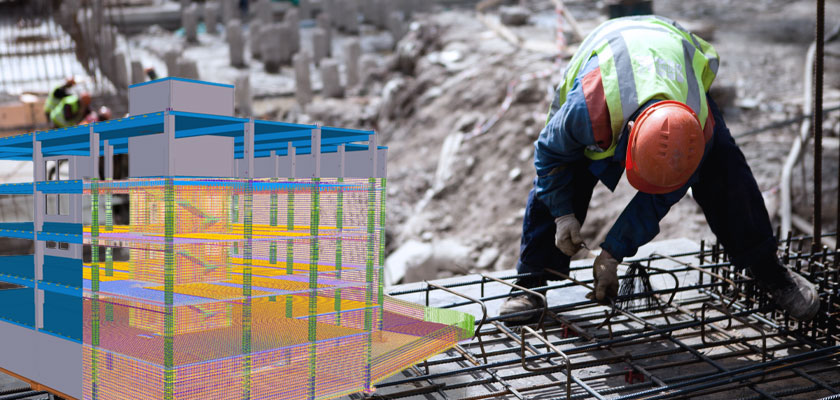Here some of the most common pain points of 2D rebar detailing and some ideas on how 3D design tools can help you overcome these challenges.
Challenge 1: Rebar clashes with the neighbors’ bars and structures
Your rebar design clashes with neighboring rebar detailed on a separate drawing. This might occur for two reasons. On the one hand, you might be working on a flat 2D drawing, in which real shapes are not easily visible. Or, on the other hand, you might be using many drawings to detail various reinforcement parts without putting all pieces together. As a result, your rebar fixer will only be able to identify the clashes until work begins on-site.
The solution:
When using 3D design tools, all reinforcement is shown in a single 3D model. Due to the visual nature of the 3D model, the reinforcements are displayed in their full geometries instead of only showing confusing and overlapping lines. As a result, any clashes with neighboring elements are identified much earlier in the process, and viable solutions can be found before issuing the drawings and ordering the bars. This translates into direct savings in time, materials, and resources on-site.
Challenge 2: Small rebar design errors leading to high costs
In a 2D drawing, some of the bars may be incorrectly specified. Sometimes a simple typo error might cause many inconveniences in a 2D design world. Let’s say that a bar is marked as #4 instead of #14 in the shop drawing. After bars are fabricated based on the drawing and considering that there is a 30 millimeters difference in diameter between these bar sizes, there is no way to fix this mistake on-site. You will need to order new bars delaying your project schedules, wasting material, and increasing your cost.
The solution:
When viewing a 3D model of the construction, any minor errors such as typos can be easily spotted and corrected. This is because different types of bars are distinctively and automatically marked, each with their own color-coding. 3D shows bars as those look in real life, and adding color to the bars makes it easy to identify if something is wrong at an early stage.

